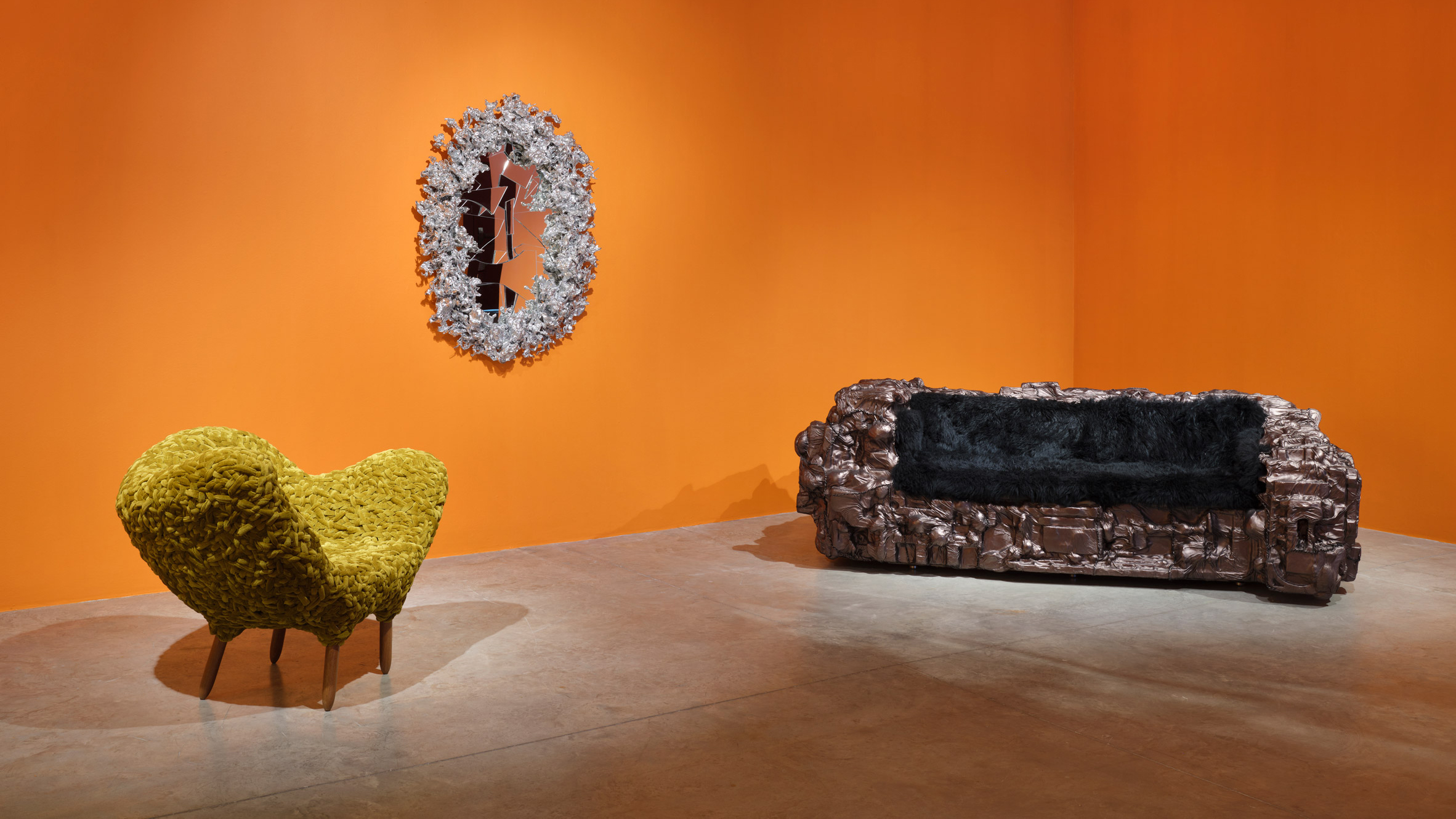The Brazilian designer’s first solo show after his brother’s death, On the Road, represents a path forward for his craft-focused practice.
“Since the beginning, I’ve always wanted to make a portrait of my country,” says Brazilian furniture designer Humberto Campana. “Not just to look at Modernism or the Bauhaus influence, but to show Brazil with all its mistakes, textures, chaos, kitsch, culture, elegance and humility.” Now, two years after the untimely death of his brother and Estúdio Campana co-founder Fernando Campana (1961-2022), Humberto is recommitting to this aim, and expanding on it.
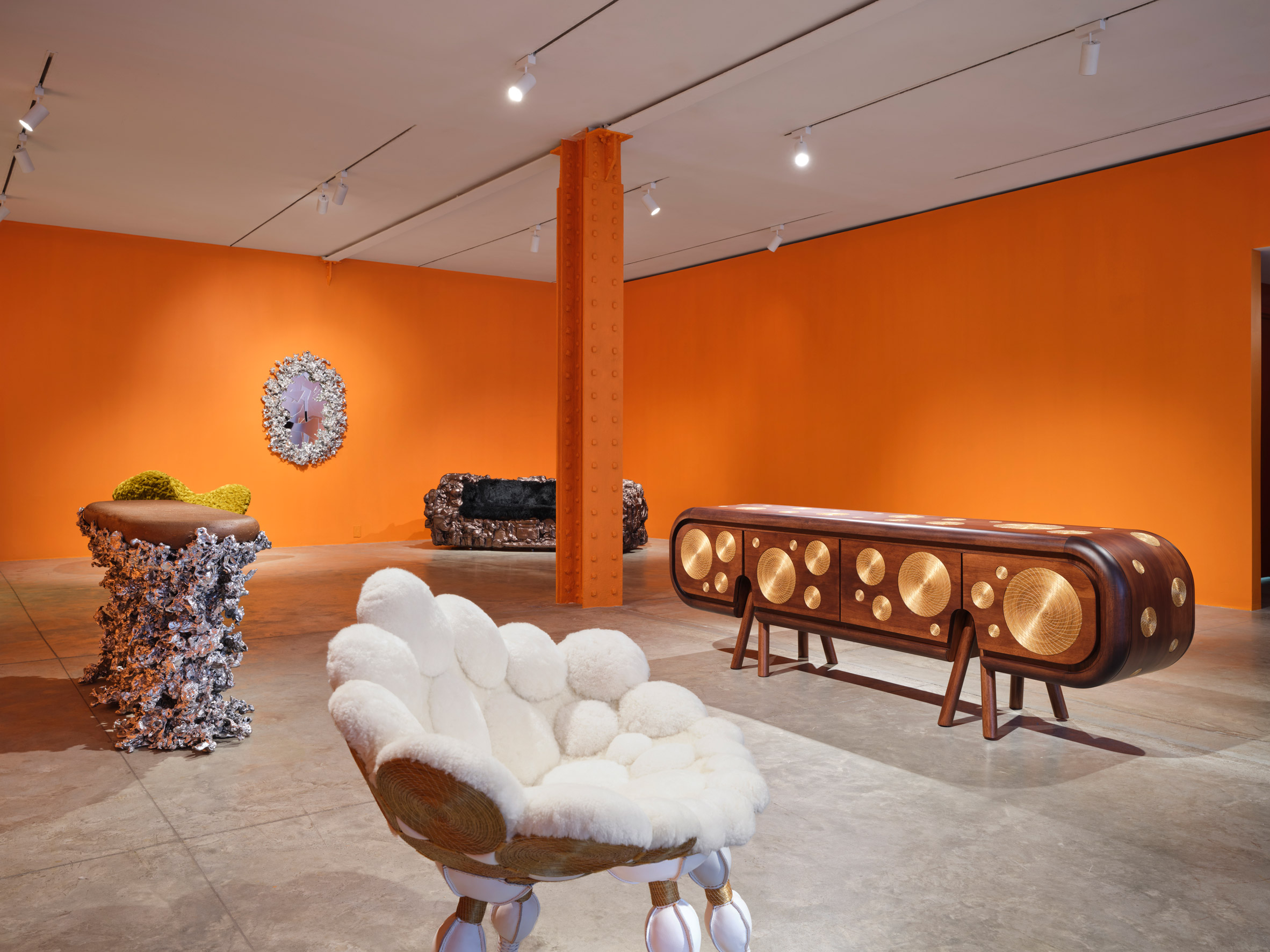
His first solo show, On the Road—on view at Friedman Benda gallery in New York through April 20th—presents 13 recent furnishings and light fixtures that re-examine some of the local scrap materials that first captivated the design duo’s imagination when they began their São Paulo studio in 1984, and explore new mediums derived from nature. What the works also reflect, says Humberto, is his new appreciation for impermanence and a self-compelled continuation of the creative spirit founded in his partnership with Fernando.
Through their playful furniture designs, the Campana brothers have made a career of putting Brazil’s artisan craft culture on the world stage. Inspired by their roots in small-town Brotas, assemblages of raw materials like the wood shards that create the Favela chair (1991) or the mop-like rope of the Vermelha chair (1993) turn everyday cast-offs into functional art. The 2009 Cartoon chair takes the same multiplied approach to stuffed-animal toys, which create a comforting, plush upholstery. Their earliest pieces used a blowtorch to make slits and cut-outs in metal side chairs, a collection the duo gave the cheeky name, Desconfortáveis (Uncomfortable). Each Estúdio Campana piece is imbued with whimsy and invites a closer look at its construction.
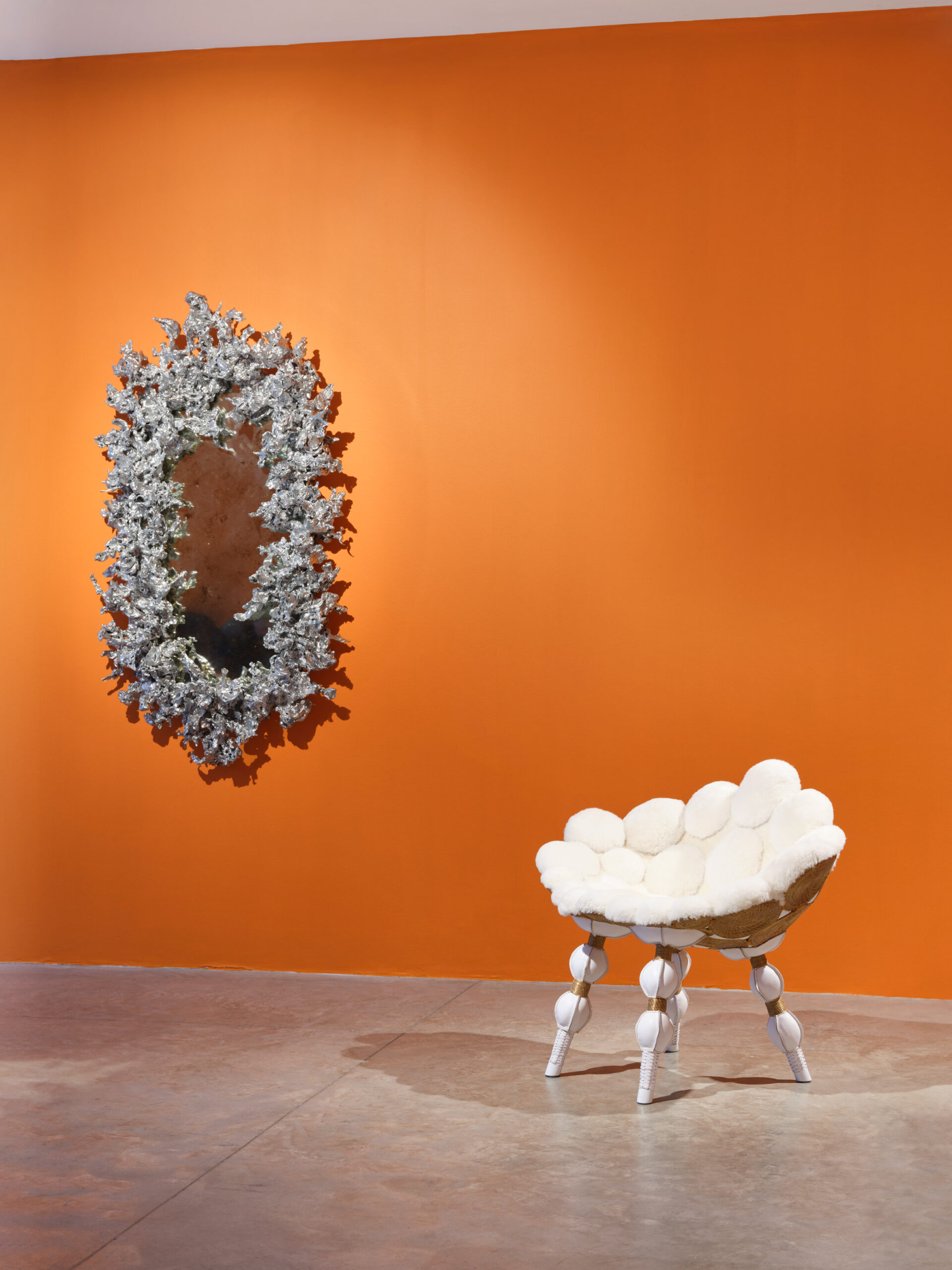
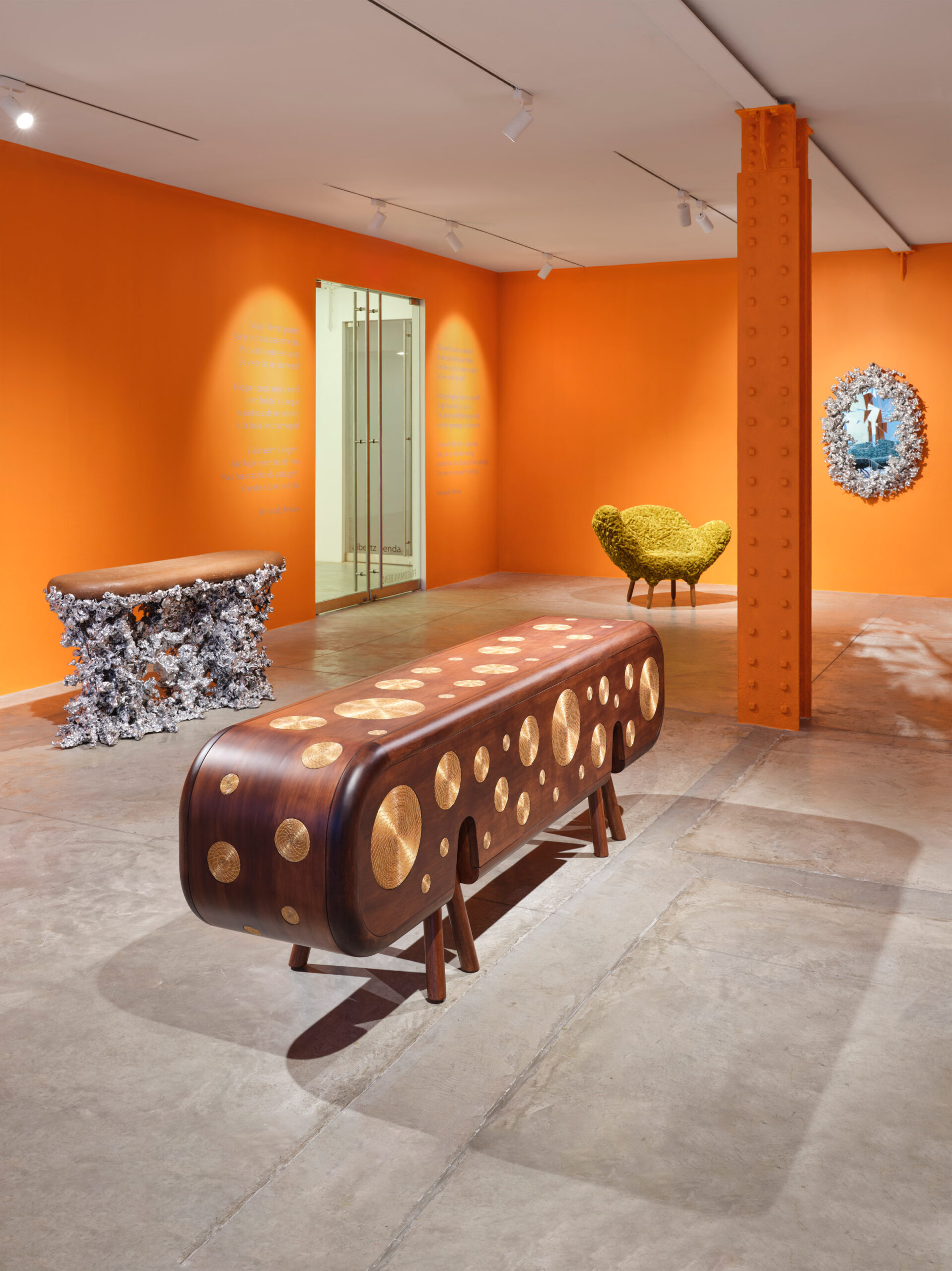

More recently, that feeling has been born through the studio’s surprising composites of local crafts or upcycled components. The works exhibited in On the Road combine multiple materials of humble origins. The Galactica sofa (2022), made of upcycled Styrofoam wrapped in leather, and the Jalapão chair (2024)—whose native Brazilian capim dourado fibre roundels form a curved, sheepskin-upholstered seat atop leather-wrapped legs—both help expand the definition of what their raw materials can become.
Humberto is also presenting the experiments with adobe he has been working on since the pandemic. One of the world’s first natural building materials, adobe’s inherent manually modelled quality is appealing to the studio’s ethos, that “with a little bit of confidence, they can build the world with their hands,” as the designer once described it. For the new Paisagem bench (2023) and console (2024), he supports a thick slab of it with an intricately filigreed base made of industrial aluminium scraps. It’s one of the studio’s first returns to metalworking, and the idea began in a dream Humberto had of his brother.
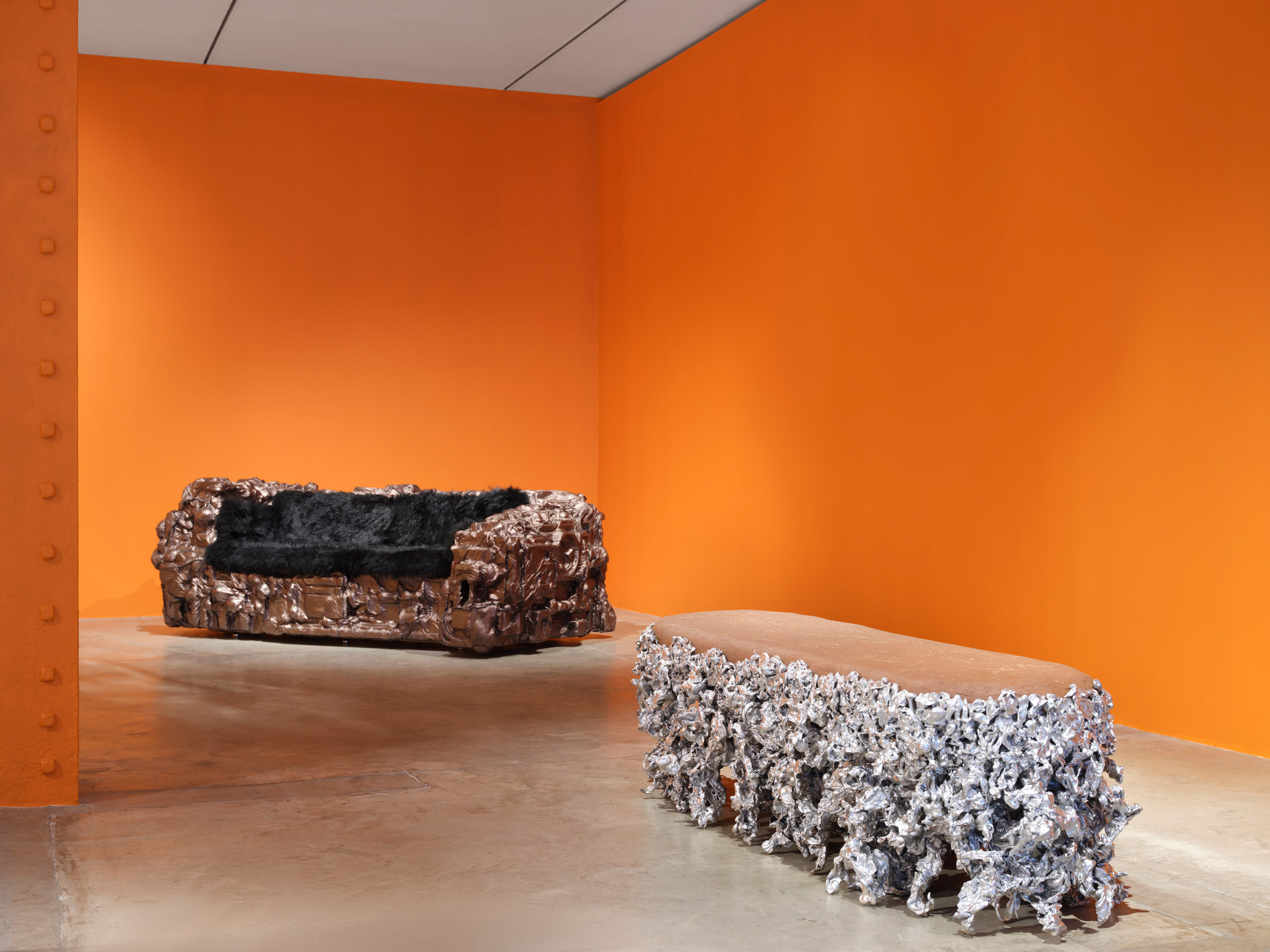
“One year before Fernando passed away, he brought these aluminium leftovers to me and I said, ‘I don’t have a good idea for these. Let’s skip and look for another’,” Humberto recalls. “After he passed, I had a dream in which he showed me ideas [for this material]. He’s not here physically, but spiritually, I have a great connection with him.” Though the show’s pieces range from 2017 to 2024, Humberto insists that his brother’s presence is alive in even those created posthumously. “The title of the show reflects on how I am trying to maintain the creativity of Fernando, now that he has passed away,” he says. “I try to never stop creating. It’s a way to avoid sadness, but it’s also a way to keep him here.”
This show at Friedman Benda is Humberto’s first since Fernando’s death, which triggered his desire to reconnect with nature and spirituality. This shift in mindset can be seen in his efforts to make furniture that brings “good vibes to people’s houses,” he says; in creating objects that use sustainable and eco-friendly materials; and in completing the environmental love letter to Brotas that he and Fernando have been designing since 2020: a public park intended to educate on the harm of the agribusiness in the area.

“In the countryside, on a piece of land where we grew up, we decided to construct 12 pavilions, all made with local materials or plants—cactus, bamboo, or agave—as a place for art installations. We are working with a group of biologists to regenerate nature,” describes Humberto of the Instituto Campana project, an initiative that supports design’s ability for social transformation. “We want to use beauty, lightness, elegance and humility to encourage respect for the environment in an area where nature has been completely destroyed.” The park will open in June 2024 and Humberto intends to donate it to the city.
In an era of new robotic technologies like 3D printing and artificial intelligence, the designer is dedicated to work that takes an opposite approach, emphasising humans’ relationship with nature and what incredible things can be made by hand, sustainably, from its productions. Humberto admits that giving voice to the thoughts behind the pieces is a new challenge for him. Fernando was always the extrovert while he worked in silence, “creating beautiful things with a message.”

In a time of great personal change and an uncertain global environmental future, keeping creative in the studio has been an important constant for the designer. “Making these works is like therapy for me,” he says. “Whenever I am connected to a design idea, it saves me from my madness. I try to keep moving so I never get lost in it.”
Photography by Timothy Doyon, courtesy of Friedman Benda and Estúdio Campana.
Read more: Design | Friedman Benda | Furniture | New York | USA



